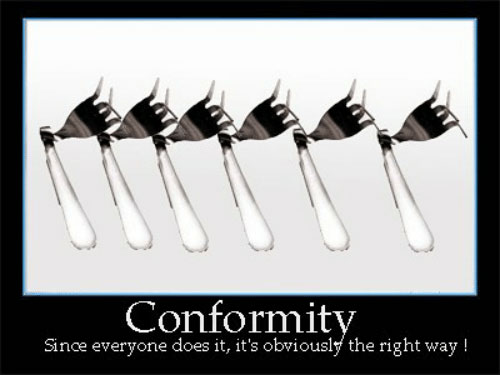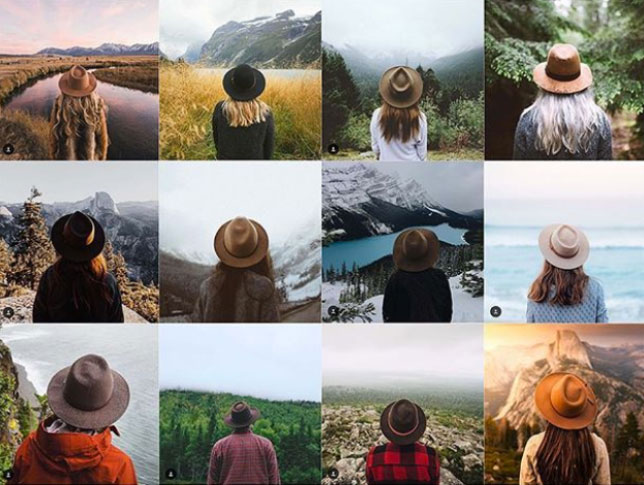Finding your voice, discovering your vision
Do you remember what it was like being a teenager at high school? For some, it might seem a lifetime ago, for others it may just be like a week ago. Remember the pressure to conform — to have what the cool kids had, to speak and use the lingo that’s so “in” at the moment, to do what’s considered cool and to avoid what was totally uncool or risk ostracised? And even if you resisted conforming, you were hyper-aware of what the protocols were: how to dress, how to speak, how to behave if you wanted to be part of the trend. Oh, the humanity!
As we move beyond adolescence and institutions like schools, we come to realise the value of being ourselves and forging our own path in life.

In all my years of being involved in photographic communities, I’ve noticed that much the same occurs. As new photographers, we latch onto our “heroes” — those whose work we love and whose successes we admire and seek to emulate. Bit by bit, we begin modifying the way we shoot, the way we express our creativity, to mirror the work and styles of our photographic heroes. We latch onto a perceived notion of what “a real and successful photographer” does: what they talk about, how they dress (a hat and scarf are haute couture), what they shoot, how they shoot, what gear they use, and so on…
We begin latching onto trends in photography and are drawn into the challenge of creating work to fit in these trends because of the success enjoyed by those who created the trend in the first place (nowhere is this more evident than on Instagram).

The images on Instagram are starting to all look the same.
And somewhere in the process, we lose the part of our creative selves, we lose our very own unique voice before it even had the chance to make its first utterance, because we invested so much energy chasing someone else’s vision.
“But I have no creative soul in my body, I don’t know what my voice or visions is. I don’t know what looks good, or doesn’t look good.”
These are common exhortations I hear from people who, surprisingly, enjoy photography or, at the very least, enjoy buying cameras and lenses. A creative voice needs to be nurtured, nourished, listened to; not ignored or silenced. You can’t rush creativity. You need to give it time and space to grow, to consume you. Just as you grew to realise what your real values are as you moved beyond the conformist stages of adolescence, so too must you allow your real visual voice to grow beyond slavish mimicry of what you had observed as being successful practice.
Successful creative people are not successful because they imitated or emulated someone else. They are successful because they created work that was unique, groundbreaking and wholly theirs. Emulation creates derivatives; nothing fresh and exciting is produced from it. Chasing the fame and popularity and success that someone else has achieved means that you’re completely avoiding making your own mark in the world.
Here’s something to consider: instead of focusing on what the successful creative has produced (the subject, the style, the content, their voice etc), broaden your thinking and consider the hows and whys of their success. Why do their images work, how has their visual voice developed over time, how are they marketing or publicising themselves, how are they connecting with their audiences.
Shift your focus from the product to the process. Then reflect on these processes in light of your own creative behaviour. Do you shoot as much and as often as your heroes. Do you have the skill-sets in lighting and editing possessed by these heroes? Do you invest the same amount of time your heroes have invested in developing their craft and vision? Do you talk the talk and walk the walk that will allow you to connect and engage with your audience as they do?
Shifting this focus allows you to distance yourself from content and instead look at strategies, approaches and processes. Yes, it’s a little bit more analytical than you thought what “being creative” would be, but analysis and self-reflection is like 20-20 hindsight, it lets us look at things more objectively and allows us to internalise what we think works for us and reject what doesn’t work for us. Or to put it another way, if you’re a fish and you admire a bird because you think its ability to fly is awesome, don’t focus on flying (’cause it’ll never happen) but focus on developing something that’s unique to you (the ability to breathe underwater) and make it your thing. In no time, you may find that the bird will begin to admire what you can do, because it can’t do that.
You have the tools to create great work. The important thing is to make sure the great work you create is something that comes from what makes you uniquely you, and not something that makes you look like someone else.
Postscript: My answer to those who claim “not to have a creative bone in my body” is to say, “Then you’re not spending enough time being creative. You’re not shooting enough. Go and shoot more. Photograph more things. Take your camera out more often. When you have an idea that’s yours, shoot it and shoot it and shoot it until you’ve worked it out of your system. Make time, not excuses.”

No Comments